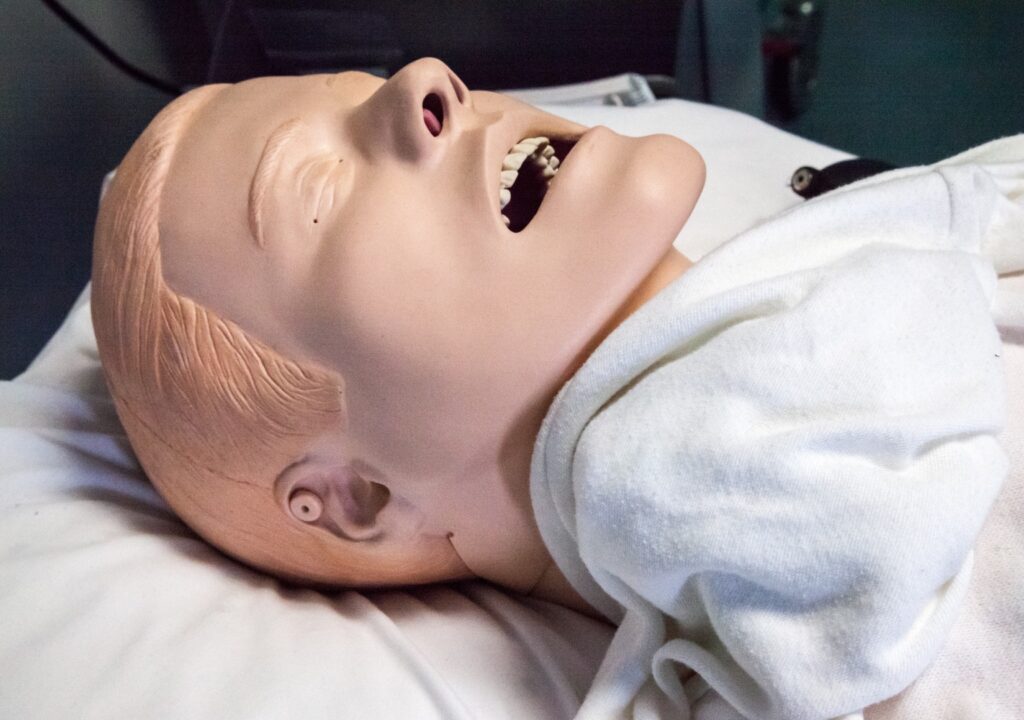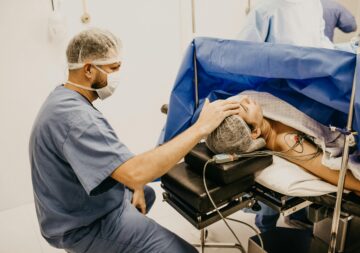
Cardiopulmonary resuscitation (CPR) is a civic skill that can be taught to even elementary school children. A human life can be saved with the right action, quick call for help and quickly started basic resuscitation. And a child can be the very person who saves a person in an emergency.
Author: Jenni Hämäläinen
The importance of cardiopulmonary resuscitation skills
In the case of sudden out-of-hospital cardiac arrest, bystander cardiopulmonary resuscitation (CPR) is one of the most important parts of the survival chain. (Zive et al. 2018.) Since 2015, international health organizations and organizations have recognized the Kids Save Lives (KSL) project as a key initiative to spread CPR principles among school children. (Nakagawa et al. 2021).
The incidence of out-of-hospital sudden cardiac arrest is approximately 80 cases per 100,000 inhabitants per year, so based on the population, emergency care in Finland encounters an average of 12 cardiac arrest patients per day. (Gräsner et al. 2020). And even in western developed countries, the probability of survival after out-of-hospital cardiac arrest is only 6-10%. (Schroeder et al. 2017).
The most important factors affecting the survival of a cardiac arrest patient are the detection of the beginning of lifelessness and the immediate emergency report to 112, the initiation of lay pressure resuscitation and, if necessary, defibrillation, and the delay in reaching first aid. (Zive et al. 2018.)
CRP education for schoolchildren
The Finnish Resuscitation Council’s Kids Save Lives project is a national CPR education aimed at schoolchildren, which aims to reach the entire population in the long term. The three principles that Kids Save Lives has: go help, call for help and CPR. The CPR education directed in the project has the most significant and long-lasting effect on increasing the amount of lay CPR in society (Kids Save Lives 2023).
Two first aid lecturers and two paramedic students from LAB University of Applied Sciences went to Kesämäki school to introduce the Kids Save Lives idea to primary school teachers and gave a four-hour lesson including theory and practice in a suitable ratio. Kesämäki’s teachers were able to practice CPR using CPR dolls after the theory lectures. After this training, the teachers are well prepared to teach their students according to the Kids Save Lives training.
The ability to help is unrelated to age
The courage to act in an emergency situation and the acquired skills are the two most important elements when talking about the ability to help in an emergency situation. Kids Save Lives is suitable for schoolchildren of all ages, and the training can be adjusted according to age level. A younger schoolchild may not be able to revive himself when the situation arises, but he has other opportunities to act in an emergency, for example by asking for more help in the situation. (Kids Save Lives 2023). Small children from the age of 4 are able to evaluate the first links of the survival chain. An older pupil may already know how to call for help and is able to give instructions on the correct course of action to other people present. At the age of 10-12, effective chest compression depths and ventilation amounts can be achieved with training dummies, and through this to practice for real situations (Schroeder et al. 2023).
School age is a natural period for learning new things, and it has been thought that the teaching of basic resuscitation can be well integrated into, for example, health information, physical education or biology lessons. In practice, however, a teacher of any subject can act as a Kids Save Lives teacher, your own enthusiasm for the subject is the most important! The Kids Save Lives project is also based on the idea of reaching people in schoolchildren’s homes. Through school children, interest, knowledge and learning materials can also reach a bigger forum. The CPR education implemented in schools is gradually increasing the number of adults with CPR skills in our society, and the understanding, interest and awareness of the importance of basic CPR is also increasing. (Kids Save Lives 2023).
Conclusions
Children are an important target group for disseminating resuscitation principles (’check-call-compress’) because they are often curious and motivated to learn new things and teach new skills (Nakagawa et al. 2021). School children are mostly very motivated to learn basic life support. Regular basic life support training, regardless of age, strengthens long-term skills. School teachers act as a guide to support basic life. School children also act as multipliers by imparting skills that support the basic organ to others. The use of age social media tools in teaching is a promising point for schoolchildren of all ages. (Schroeder et al. 2023).
Basic CPR training for school children has the potential to train entire generations to respond to cardiac arrest and increase survival after out-of-hospital cardiac arrest. Curricula, comprehensive legislation, and scientific evaluation are central to the development of primary care education for schoolchildren. (Schroeder et al. 2023).
References
Gräsner, J., Wnent, J., Herlitz, J., et al. 2020. Survival after out-of-hospital cardiac arrest in Europe – Results of the EuReCa TWO study. Resuscitation. 148, 218-26. Cited 4 Dec 2024. Available at https://doi.org/10.1016/j.resuscitation.2019.12.042
Kids Save Lives. 2024. Cited 4 Dec 2024. Available at https://www.elvytysneuvosto.fi/kids-save-lives/
Nakagawa, N., Salles, I., Semeraro, F. & Böttiger, B. 2021. KIDS SAVE LIVES: a narrative review of associated scientific production. Current Opinoin in Critical Care. 27(6):623-636. Cited 4 Dec 2024. Available at https://doi.org/10.1097/mcc.0000000000000872
Schroeder, D., Semeraro, D., Greif, R., et al. 2023. KIDS SAVE LIVES: Basic Life Support Education for Schoolchildren: A Narrative Review and Scientific Statement From the International Liaison Committee on Resuscitation. Resuscitation. 188, 109772. Cited 4 Dec 2024. Available at http://doi.org/10.1016/j.resuscitation.2023.109772
Zive, D.M., Schmicker, R., Daya, M., Kudenchuk, P., Nichol,G ., Rittenberger J.T., Aufderheide, T.,Vilke, G.M. et al. 2018. Survival and variability over time from out of hospital cardiac arrest across large geographically diverse communities participating in the Resuscitation Outcomes Consortium. Resuscitation. 131:74-82. Cited 3 Dec 2024. Available at http://doi.org 10.1016/j.resuscitation.2018.07.023
Author
Jenni Hämäläinen is a Senior Paramedic Lecturer at LAB University of Applied Sciences.
Illustration: https://pxhere.com/en/photo/832318 (CC0)
Reference to this article
Hämäläinen, J. 2024. Kids Save Lives project as a key initiative to spread Cardiopulmonary resuscitation principles among school children. LAB Pro. Cited and the date of citation. Available at https://www.labopen.fi/lab-pro/kids-save-lives-project-as-a-key-initiative-to-spread-cardiopulmonary-resuscitation-principles-among-school-children/






